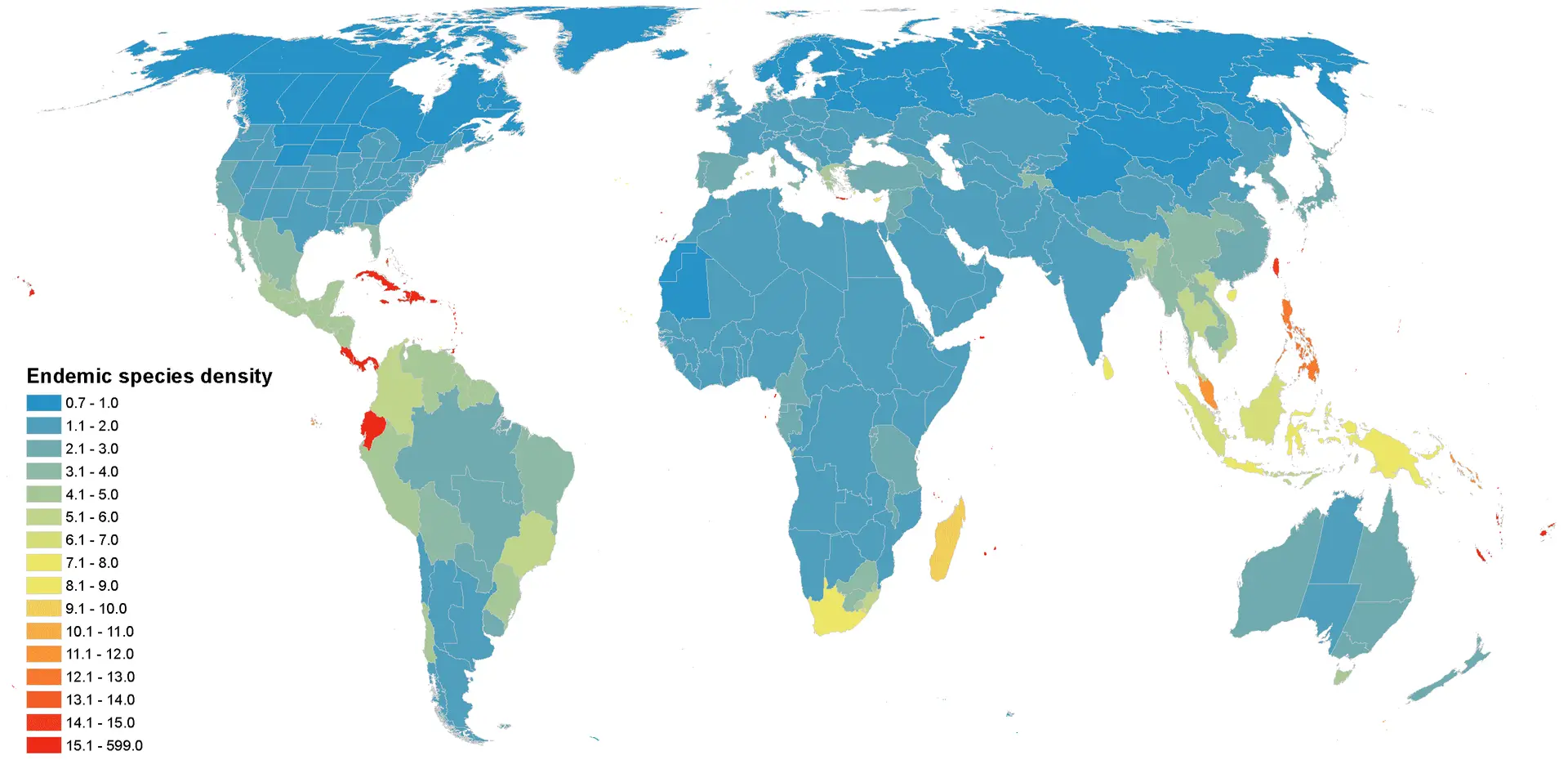September 5, 2013
You’ve heard the adage, “If it sounds too good to be true, it probably is.” But new research by Saving Nature scientists offers an amazing conservation ‘deal’. Backed up by top-flight science and data, it’s too good to pass up. So what is the deal? The new paper, published today in Science, was co-authored by Saving Nature founder Stuart Pimm and Vice President Clinton Jenkins, and by Lucas Joppa of Microsoft Research, who completed his Ph.D. with Pimm.
PROTECTING A FIFTH OF THE WORLD'S LAND TO SAVE TWO-THIRDS OF ALL PLANT SPECIES
The key finding of the paper is that protecting a fifth of the world’s land area will save two-thirds of the world’s endemic plant species. Using the Kew Gardens plant database, the authors looked at the geographical distributions of 110,000 plant species. From this analysis, the researchers identified the smallest set of regions that contain the largest number of plant species.
They discovered that nearly two-thirds of the world’s plants occur in just 17 percent of the world’s land. The bad news is that less than a sixth of that 17 percent is currently protected. “Our study identifies regions of importance. The logical – and very challenging – next step will be to make tactical local decisions within those regions to secure the most critical land for conservation.” Pimm said.

Incorporating years of data, Jenkins created a detailed, color-coded map of Earth. The map illustrates where endemic plants are concentrated. This information helps conservation ecologists, policy makers, and economists to prioritize locations for conservation eorts. Because of ecological food webs, protecting endemic plants not only helps save rare plant species—it helps save dependent species, such as specialist herbivores, epiphytes and so on. “We also mapped small-ranged birds, mammals and amphibians, and found that they are broadly in the same places we show to be priorities for plants,” said Jenkins. “So preserving these lands for plants will benefit many animals, too,” he said.
According to Pimm, to achieve biodiversity conservation goals, the world needs to protect more land than we currently do and much more in key places such as Madagascar, Colombia, and coastal Brazil. These are all places where Saving Nature works.
Saving Nature relies on cutting-edge science to make its conservation decisions. With the limited amount of conservation funding available, we must use the best science to maximize the number of threatened species of wildlife and plants we can save. The report’s findings truly oer conservationists a great deal.
SCIENTIFIC NOTE: The work in Science focused on endemic species of plants. Endemic species exist only in specific places, such as a particular mountain range or forest. Endemic species are typically very rare, because of their limited geographical distribution. Endemic plants are also crucial to ecosystems that support other endangered species and, more broadly, biodiversity. Because they exist only in one place, endemic plants are often hosts for other endemic species that depend on them—insects, animals, and even other plants such as epiphytes.
Copyright 2025 Saving Nature | fGreen Theme powered by WordPress
